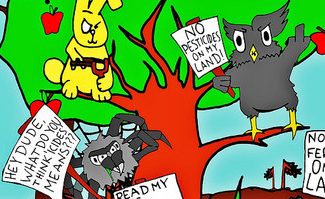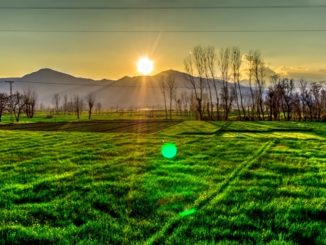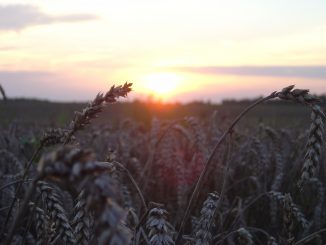Sebastian Lanker and Rainer Oppermann explain how CAP is failing environmentally, before outlining specific budget neutral proposals, including for sustainability and agri-nature payments.
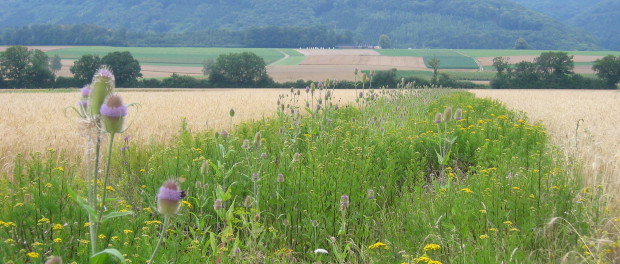
The results of the last CAP-reform 2013 have been strongly disappointing from an environmental perspective. The introduced greening takes 30% of the national envelopes adding to a total of €12 bn per year in the EU. Greening however, has had almost no significant positive effect on the environment, including on biodiversity.
Foe example, a survey among ecologists reveals that just 3 of the 8 types of ecological focus area (EFA) will have a positive impact on biodiversity (Pe’er et al. 2016). These three types (fallow land, landscape elements and buffer strips) account for 25% of the ecological focus area in the EU (EU Commission 2016). Furthermore, pesticides are permitted in these EFAs, which doesn’t make sense for biodiversity protection. The other two measures, maintenance of grassland and crop diversification will have little impact.
It is also the case that the EU’s fauna flora habitat-regulation has no systematic support by the CAP so far: Agri-environmental programs are not focused to protect species and habitats. The EU’s LIFE-fund, which is dedicated to specific biodiversity protection, has just a tiny share of the total of the EU-budget. And beyond the core biodiversity, the actual CAP is neither ready to address other environmental problems like the protection of soils, groundwater, climate and the cultural values of landscapes, nor other challenges such as animal welfare.
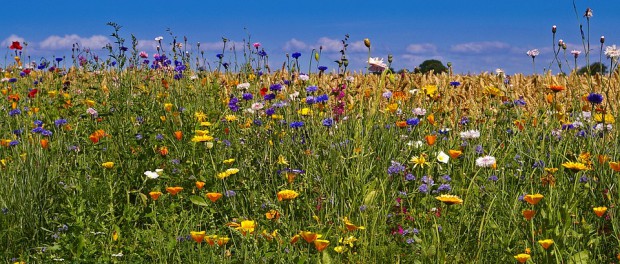
What we are suggesting instead, in policy terms, is public money to public goods. We suggest the following lines of policy measures to address the problem:
- Sustainability payment: This payment should have some general environmental requirements such as minimum proportion of ecologically valuable area in both arable and grassland, and an upper limit on livestock density. It could also be combined with other general criteria of animal welfare or measures against climate change. Payment to be granted per hectare for the total area of a farm.
- Agri-Nature payment (ANP): This payment would be dedicated to measures for high nature value area on arable and grassland. In our concept, we list ten EU-wide measures which would promote biodiversity in the agroecosystems and which are so far underrepresented in the classical agri-environmental schemes. For such a payment we need to set a clear incentive for both farmers and for member states offering these measures.
- For farmers, it is important to also pay a top-up for profit and risk, which is so far not foreseen in the CAP-system. Nature-protection could be one self-standing part of a farm besides e.g. arable production and animal husbandry. If we take farmers needs seriously, we need to understand that they need to make profit and also finance investments e.g. in specific machinery for environmental friendly farming. The agri-nature payment would therefore substantially higher than in typical agri-environmental schemes. For our calculations we are assuming a premium of on average 1.350 €/ha for measures on arable land and 700 €/ha for grassland. This would depend on the specific measure and this payment could also be differentiated according to other measurables, e.g. the soil quality on the farm. If a farm has more than 10% of its acreage for the ANP-measures, we have also foreseen a nature management payment to support the advice and targeted localization of measures on the farm.
- For Administration: The agri-nature measures will be detailed and will require some effort for administration, extension and monitoring. However, in order to really enhance biodiversity on farms, we need to see this effort as an integrative part of the public good biodiversity. We need to support farmers and get to a more trustful cooperation between administration and farmers and get away from the system of mistrust, which is the norm in the CAP and it’s agri-environmental schemes. Since agri-nature measures involve higher efforts, there is a need to pay additional transaction costs to the member states to cover the efforts in the area. Therefore we have calculated a bonus of 25 % to all payments in the Agri-Nature sector dedicated to the member states in order to cover administration costs and to have an attractive incentive for an ambitious implementation of Agri-Nature-Measures with good monitoring.
- Rural development programs: These include the agri-environment and climate programs, the support of organic farming and the rural development programs. This measures have less onerous administration, so here the co-financing rate might be slightly below the agri-nature payment.
The model calculations show that farms with a stronger engagement in biodiversity-enhancement will profit from the model, farms not participating might face some losses. We also did a first rough preliminary calculus to show that this agricultural policy model will be budget neutral, so no additional resources are needed. The main finances come from a reduction of the income support within the first pillar. The EU court of auditors and scientists have pointed out that the EU commission has done a poor job in justifying this lump sum income support. The main argument for income support is still the price reduction of the MacSharry reform of 1992, which is not a sufficient argument for the use of tax payers money. Especially for the Western European countries, the income support should be substantially reduced or completely phased out. This also means that the new policy model needs a phasing-in to avoid structural breaks for the sector. Farmers will need some time to adapt to a new policy model.
However the situation in Eastern Europe is different with a large share of small and subsistence farmers. There is still a need for a longer transformation period in the new Member States and we might need to grant support for a bit longer. In that respect, we also see the need to further specify the model.

The new CAP model presented (see Oppermann et al. 2016) is focused on biodiversity and cultural landscapes and on the financial architecture of a model being able to enhance biodiversity and environment with the same budget going to farmers. However, this model will also enhance many other environmental goods such as water and climate protection. Some other objectives of society need to be considered for a further development of the model. This is true for the field of animal welfare and for the adaption of the model to all parts of the European Union (the calculations had been done for Germany so far).
The model presented here would make the CAP fit for future, fair to farmers, taxpayers, environment and nature and sustainable in all dimensions. We hope that it will contribute to set new priorities in the CAP and to stimulate the debate in the EU for a better CAP-reform 2021.
Sources:
EU Commission (2016): Greening after one year – Commission staff working document from 22.06.2016, SWD (2016) 218, part 1/6, European Commission, Brussels, Belgium, url: http://ec.europa.eu/agriculture/direct-support/pdf/2016-staff-working-document-greening_en.pdf
Oppermann, R. A. Fried, N. Lepp, T. Lepp and S. Lakner (2016): Fit, fair and sustainable – proposals for a new EU Common Agricultural Policy, Study supported by Naturschutzbund (Nabu) Germany, Berlin, October 2016,
The full text in German here: https://www.nabu.de/imperia/md/content/nabude/landwirtschaft/agrarreform/161104-studie-neueeuagrarpolitik-langfassung.pdf
Summary in English here: https://www.nabu.de/imperia/md/content/nabude/landwirtschaft/agrarreform/161107-nabu-conclusions-cap-study_en.pdf
Pe’er, G., Y. Zinngrebe, J. Hauck, S. Schindler, A. Dittrich, S. Zingg, T. Tscharntke, R. Oppermann, L. Sutcliffe, C. Sirami, J. Schmidt, C. Hoyer, C. Schleyer and S. Lakner (2016): Adding some green to the greening: improving the EU’s Ecological Focus Areas for biodiversity and farmers, article accepted for publication by Conservation Letters.



